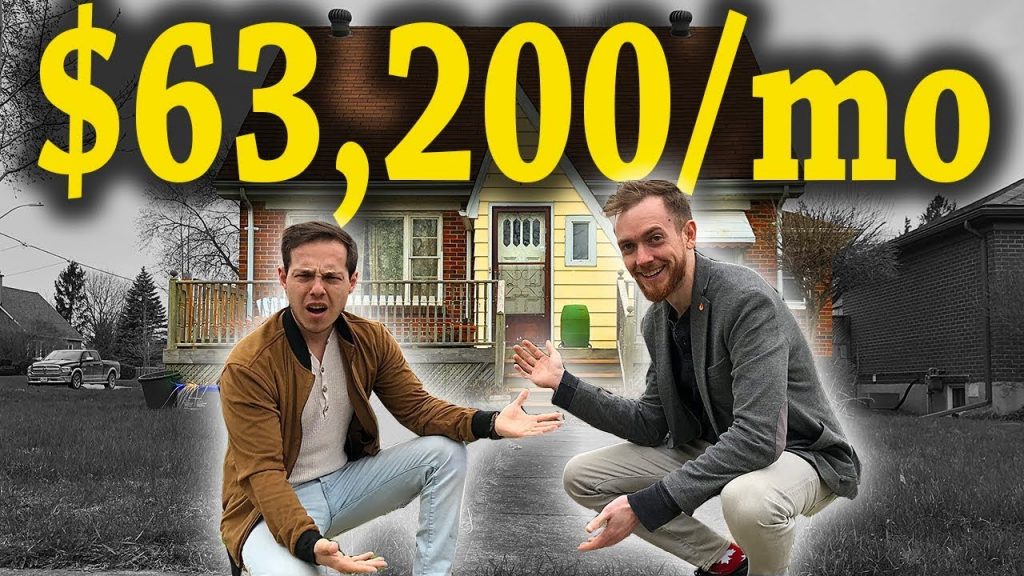How Much Money Does My Small 9,000 Subscriber YouTube Channel Make?

There are a lot of videos out there that claim that they’ll tell you how much money a YouTuber makes but no one gets the exact number of views to dollars right.
Because, there is no real right answer. But I’m here to tell you that they’re pretty much all wrong anyway. Today we’ll delve into my analytics of my small youtube channel. I’ll show you how much I make, compare it to other YouTubers big and small, and tell you. Technically, why every single one, including me is technically lying to you. Let’s get started.
Here’s time stamps for every little thing I cover just in case you care more about one thing than another. Alright, let’s begin. Some creators view this topic as taboo, and is afraid of isolating their viewers. But. A lot of creators will just show you this. A screen of their dashboard analytics and say “Oh look I made $300 dollars this month. Thanks for watching, hit that like, and subscribe.” But stretch that out over 10 minutes because they can get more revenue because they add more ads. I’m trying to give you pretty much all the information you need without too much fluff. Basically, the only thing that matters is how many monetized views you get and the amount of views you receive. Different countries have different average CPM. CPM is basically, on average, how much money you make every 1000 monetized views. Different Youtubers make different amounts per video.
What really matters though, is the true CPM. To me, that’s total amount of revenue divided by total amount of views in thousands. So, I’ll click view lifetime data and… here we go. So, my real CPM would be $1.45 every 1,000 views. This fluctuates. For example, this month’s true cpm for me is really different. $2.30 per thousand views. Each youtuber is different too. When I looked through all the different youtubers who shared their analytics, they all made different CPM. Some as high as 10 dollars per a thousand views, and some closer to just 1 dollar per thousand. Let’s look at a couple for examples. It’s really substantial how different some of these are. Since, I make tech videos, I assume a lot of people use ad block and so I get way less ad revenue from videos compared to some other creators. Subscriber counts don’t matter. Where subscribers matter is the fact that, they are more likely to give you an initial burst in views when a video is released. Which means, almost guaranteed revenue. That’s it.
Now here’s the part that many don’t show you. Those amazon affiliate links youtubers leave in the description do give them revenue. But how much? I’ve lately started to care more about the amazon affiliate program to add a lot of links in my descriptions to gain a little more revenue. However, the money is just a fraction of youtube adsense revenue. But during the holiday season, it does blow up like crazy. They only let you view the amounts in yearly increments or smaller, so here’s how much I made in 2018.
Lastly, there are many who put in preroll or outro ads, or even sponsorships. Like all those vpn, honey, and squarespace spots. Those vary in value and can really increase your final youtube take home pay. However, I’ve only had situations where companies send me a product to check out, so I can’t say how much those preroll types of “sponsorships” go for.
So that’s it. A small youtuber makes decent money right? Makes a sweet part time job? Not really. That’s not the end of it. Here’s what youtubers don’t tell you. See. When you work at a place like McDonalds, Walmart or whatever business in the US, you pay taxes on your wages and its taken out of your paycheck each month. But if you do YouTube. Those taxes aren’t taken out of your paycheck. Great. Free money right? No.
See, at the end of the year you have to pay those taxes. But now they’re considered self-employment taxes. Which means you have to pay 15.3% of your youtube income to the government at the end of the year. Something similar probably also applies if you live in other countries. But this is how much is owed in the US. So that is a significant chunk of your income that many forget to mention and plays a large role in what you actually get to keep. But running a youtube channel, also requires purchasing things you normally wouldn’t. Like if you’re a gaming channel, new games, if you’re a beauty channel, new exciting makeup launches. If you review tech, expensive gadgets. If you do skits, new costumes or props. If you’re Mr. Beast, ridiculous videos. It’s not all just free money. You have to use your own money for that.
How merchandise sales contribute to a YouTuber’s income and the factors that affect the profit from these sales.
As the popularity of social media continues to rise, creating content and building a following on platforms such as YouTube has become increasingly common. With the potential of earning revenue through online content creation, many aspiring YouTubers wonder how much money they can really make.
For smaller creators, such as those with only 9,000 subscribers, the amount of money earned through YouTube can vary greatly. The platform compensates creators for their content in several ways, including ad revenue, sponsorships, and merchandise sales.
Ad revenue is one of the most common sources of income for YouTubers. This revenue is generated by the ads that play before, during, or after videos. The amount of revenue earned per ad depends on factors such as the number of views, the length of the ad, and the viewer’s interactions with the ad.
For channels with 9,000 subscribers, the amount of ad revenue generated can vary greatly. On average, a YouTube creator earns between $0.01 and $0.03 per view. So, if each video on a 9,000 subscriber channel receives 1,000 views, the creator can expect to earn between $10 and $30 per video.
Of course, ad revenue is not the only source of income for YouTube creators. Many channels with smaller followings choose to monetize through sponsorships. This type of income is earned through the promotion of products or services within videos. Sponsors pay creators to review their products or services, or to showcase their brand in the video.
The amount of money earned through sponsorships varies widely based on the size of the channel and the individual agreement with the sponsor. Often, smaller channels can expect to earn around $50 to $200 per sponsored video, depending on the scope of the sponsorship.
Finally, merchandise sales can also be a source of income for YouTubers. T-shirts, hats, and other products can be designed by the creator and promoted on their channel. The profit from these sales depends on the cost of the product and the number of sales made.
Overall, the amount of money earned by a small 9,000 subscriber YouTube channel can vary greatly based on the types of revenue streams utilized. Ad revenue, sponsorships, and merchandise sales can all contribute to the overall earnings of a creator. On average, a channel with 9,000 subscribers can expect to earn between $500 and $2,000 per month, although this can vary greatly. Ultimately, the success of a channel depends on many factors, including content quality, engagement, and marketability.









How to Find the Right Business Partner – GaryVee Meeting With Jasmine Star
10 Easy Steps For Getting Video On Your Business Website
How I Turned $400 to $1.3 Million | Dropshipping Success Story 2019
Elon Musk on WEED & How His BRAIN Works
How does a blockchain work – Simply Explained